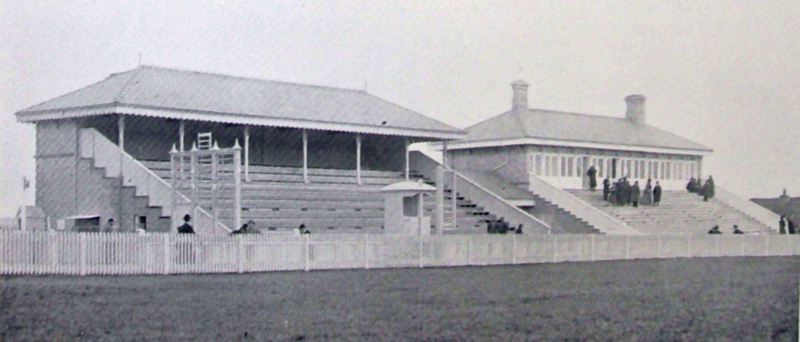Few people today realise that Newmarket, which is famous for its fine, flat horseracing, was also once home to a “jump”, “national hunt” or ‘steeplechase’ racecourse for a short period between November 29th, 1894 and December 28th, 1905.
Steeplechase races are generally run over longer distances than flat races, generally between 2 to 4.5 miles. The courses include hurdles, ditches and water jumps. The most famous such course in the country today is Aintree, where the annual ‘Grand National’ race is run.
The Jockey Club relates that steeplechase racing originated in Ireland and was so-named because young men would race their horses from church to church using the steeples as their landmarks
By the late nineteenth century, Newmarket was prospering and its status had risen. A railway station boosted a town’s status and few places could boast 3, as Newmarket did. The whole of the horseracing and bloodstock industries had thus increased and diversified, due to the many opportunities offered by the national rail network.
In the last article we saw that the railway had made it possible to transport horses and other livestock in quantity around the country, both quickly and easily. Harry McCalmont’s new station also saw the arrival of new, huge, “raceday special” trains, which had larger, more powerful engines. Only the extra-long platforms of station 3 could take these. This meant extra passengers and increased crowds for Newmarket’s race meetings and also extra trade for local businesses.
As always, Harry saw the opportunities which presented themselves. We have already noted that he loved sports of many kinds. He already had a successful stud at his Cheveley Park estate and, in addition to breeding successful Thoroughbred racehorses, such as Isinglass, he also bred steeplechase horses. Now, Newmarket was to get its own steeplechase course too. Of course, this would also extend the town’s racing season.
Prior to this there had been national hunt racing in nearby Moulton from February 20th 1863. Captain James Machell also organised a National Hunt two day meeting in March 1879, on his own land 5 miles from Newmarket. The races were 3 miles long.
So, Harry decided to build a permanent jump course on his own land and selected Links Farm as the site. This was near the town and had direct entry from the Cambridge Road.
The new course was designed as a circular race track. This meant that it occupied less space, it was more accessible to race-goers and races of any length could be accommodated.
 Following the unexpected death of Harry McCalmont on December 8th 1902, the circular course continued until the end of December 1905. Today, the Links Golf Club occupies part of that site. Unusually, its grandstand was then turned into housing, which is still in use today (see pictures)
Following the unexpected death of Harry McCalmont on December 8th 1902, the circular course continued until the end of December 1905. Today, the Links Golf Club occupies part of that site. Unusually, its grandstand was then turned into housing, which is still in use today (see pictures)
As noted in the first article of this series, as a military officer, a local MP, a sportsman and a wealthy entrepreneur, Harry McCalmont had done much in his short lifetime for his country and for his adopted town of Newmarket.
By Sandra Easom, Newmarket Local History Society,
History
Newmarket’s Steeplechase Racecourse – Col. Harry McCalmont Part 3

